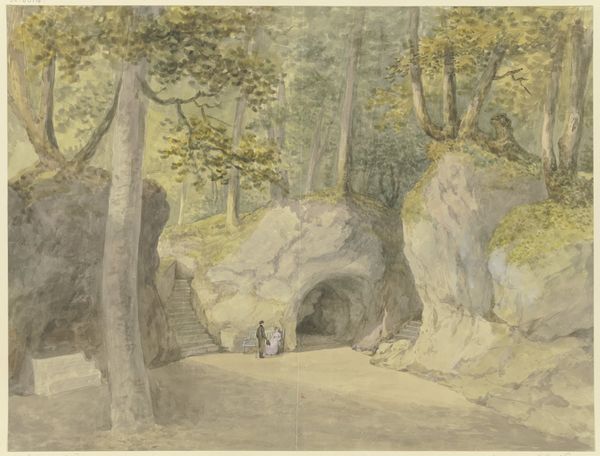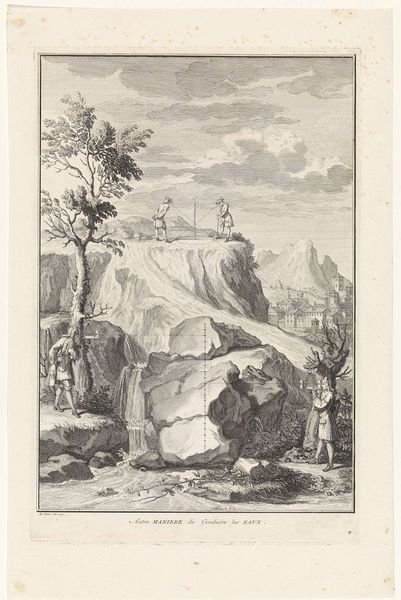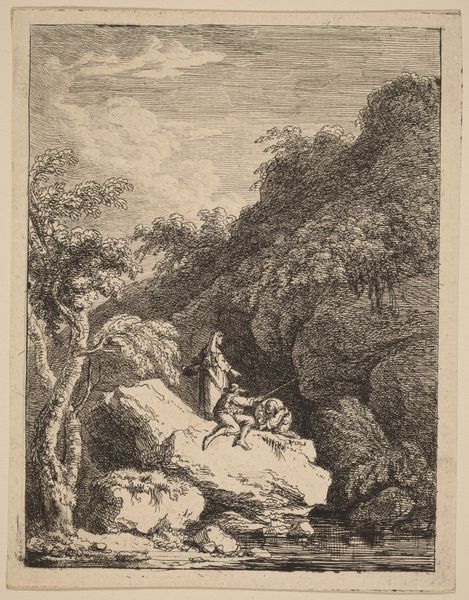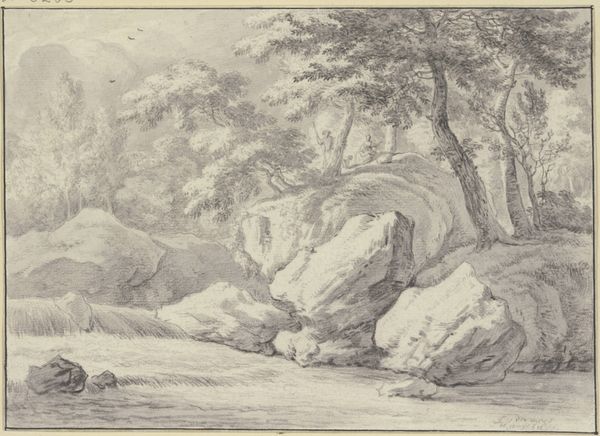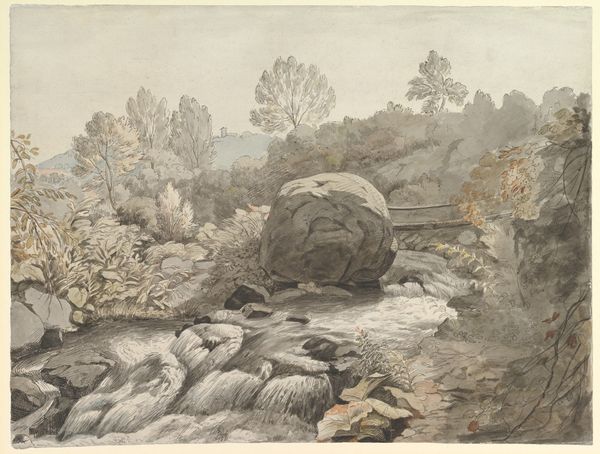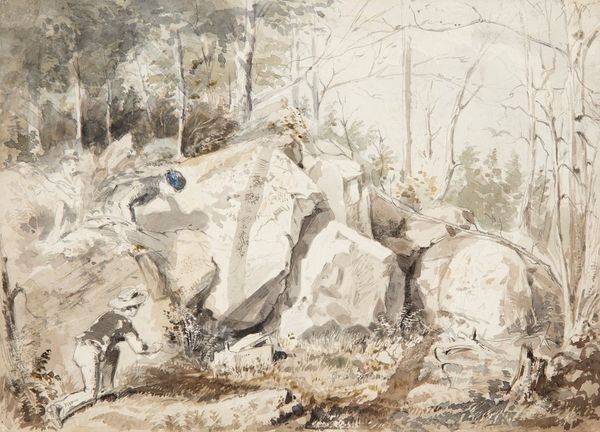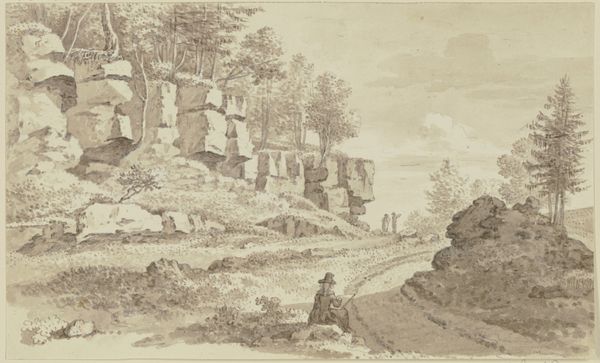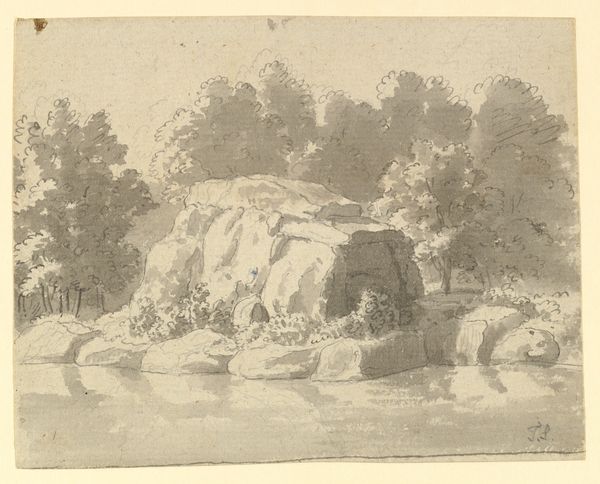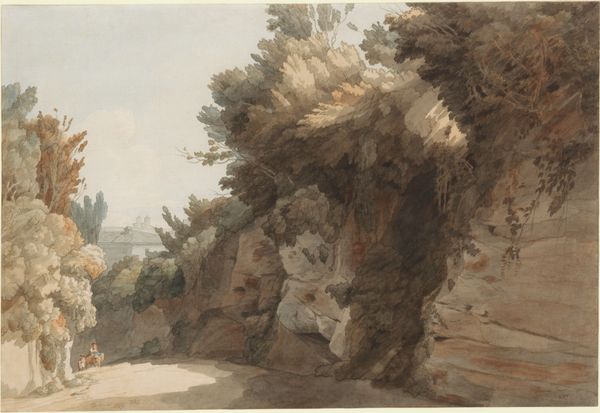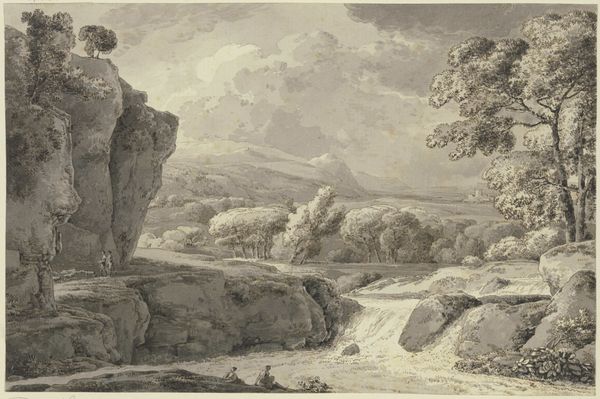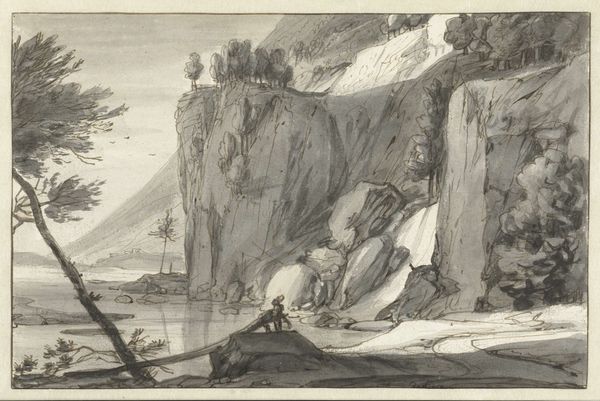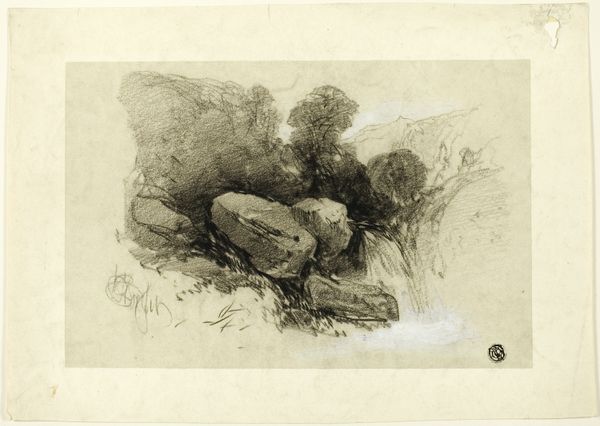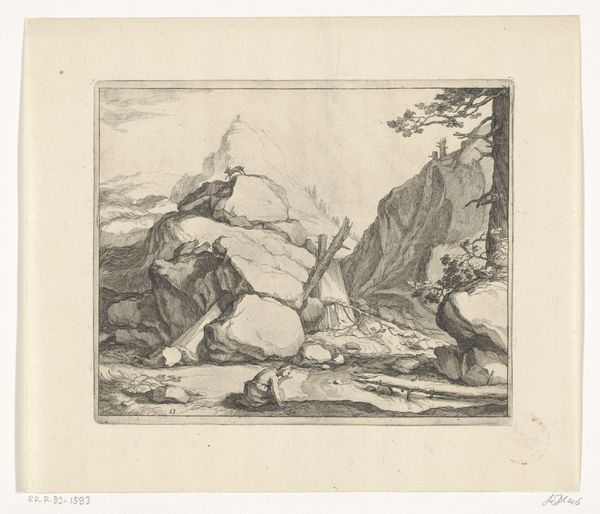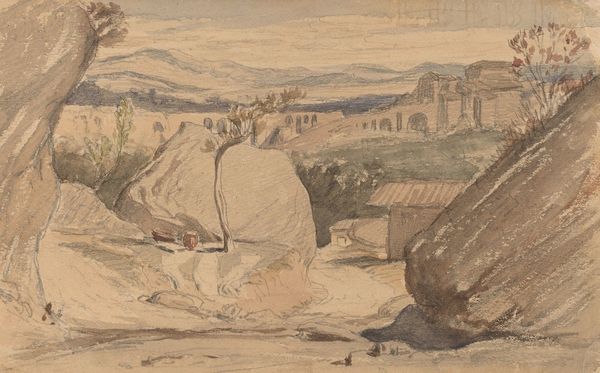
drawing, mixed-media, watercolor
#
drawing
#
mixed-media
#
landscape
#
watercolor
#
coloured pencil
#
watercolour illustration
#
genre-painting
#
mixed media
Dimensions: height 305 mm, width 255 mm
Copyright: Rijks Museum: Open Domain
Curator: What strikes me immediately about this mixed-media work, likely completed sometime between 1837 and 1908, is the softness of the watercolor washes combined with the sharper definition given by colored pencil. It creates a unique contrast. Editor: It gives a quaint air, doesn’t it? There’s a distinct layering of historical narratives at play here. Titled “Tekenaars bij archeologische opgraving,” we’re seeing artists documenting what appear to be ancient remnants. It highlights how the act of witnessing and interpreting the past is itself a form of constructing knowledge, one laden with its own biases and power dynamics. Curator: I’m fascinated by how Brouwer chose to depict these large stones. Note the meticulous attention to line, particularly in the way shadow and light define the forms. It reminds me of certain conventions in geological illustration, where accurate depiction served scientific understanding. Editor: And the implied narratives! Think about the act of excavation in that era—a moment of colonial expansion and the often exploitative collection of artifacts from colonized lands. Whose stories are being prioritized? Who gets to interpret the past? The two artists depicted embody that power of historical record. Are they neutral observers, or are they active participants in shaping historical discourse? Curator: I suppose one could see those subtle earth tones as almost mournful. The eye is led so deftly by the use of shadow, the composition emphasizing depth and drawing you into that pit where the rocks lie. But still, I feel it lacks true weight or dramatic power; instead, there’s something peaceful, ordered even. Editor: Perhaps we should also consider this work within the context of rising nationalism. The need to establish national identities, looking into a distant heroic past served specific political agendas. This seemingly benign genre-painting touches the complex ideologies intertwined with historical narrative. The archaeological dig could symbolize uncovering of cultural memory intended to unite a people under shared history, as problematic and exclusionary as these definitions often prove to be. Curator: A thought-provoking position! Seeing those compositional parallels allows me to notice fresh perspectives and hidden structures I wouldn't have spotted alone. Editor: Indeed. It’s fascinating how visual languages are inherently ideological. Thinking about whose history and narrative this represents is, hopefully, useful context.
Comments
No comments
Be the first to comment and join the conversation on the ultimate creative platform.
